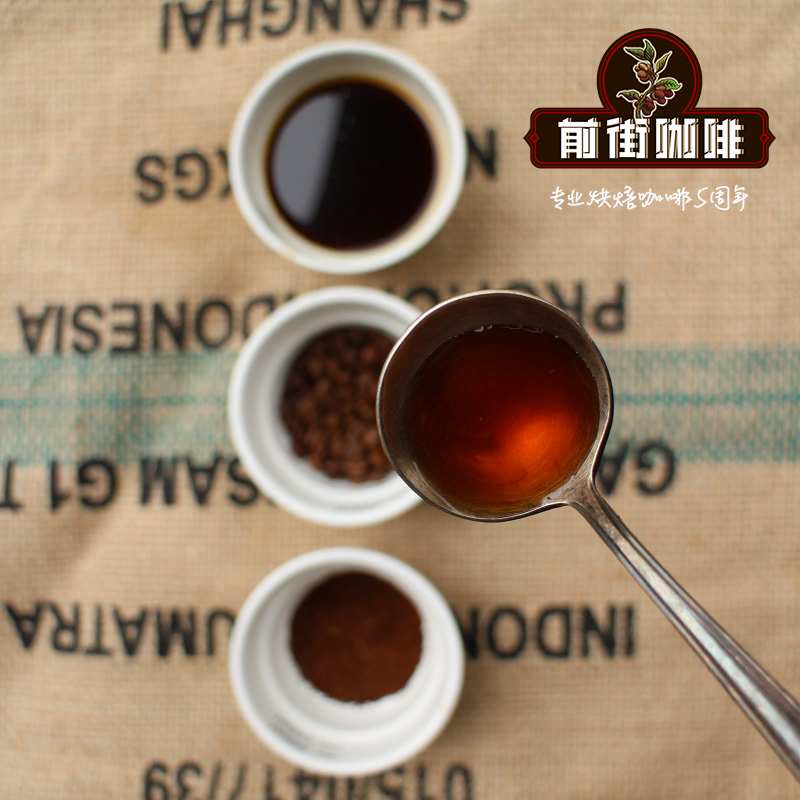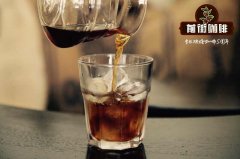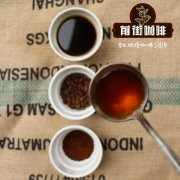Congo coffee producing country-Lake Kivu Kaisa washing plant red bourbon coffee flavor? Alabica, Congo

Professional coffee knowledge exchange more coffee bean information please follow the coffee workshop (Wechat official account cafe_style)
Congo coffee producing country-Lake Kivu Kaisa washing plant red bourbon coffee flavor? What is the variety of Arabica coffee beans in Congo?
Congo's coffee is mainly grown around Lake Kiev (Kivu); Lake Kiev is a very good coffee-growing area, with many pristine forests along the coast, with an average annual temperature of about 19 degrees Celsius, a warm and humid climate, fertile land and a geographical environment more similar to that of neighboring countries producing outstanding Arabica species, such as Kenya, Rwanda and Tanzania. The Democratic Republic of the Congo, located in central Africa, is the second largest country in Africa. There is a tropical rain forest climate in the north and a savanna climate in the south. The coffee grown in Congo has a unique flavor. In recent years, it has been favored by European and American roasters, and its production capacity has increased steadily, rising to more than 9 million metric tons in 2016. Unfortunately, the visibility of Congolese coffee beans in the world is much less well-known than his diamonds and precious metals.
The equator runs through the north-central part, and the local forest cover is about 58.7%. It is the seventh largest tropical forest in the world. It is also rich in agricultural products, most of which are tropical crops. The border accounts for the vast majority of the Congo basin, and the depression in the center of the basin floor is about 300m above sea level, suitable for growing coffee in Robusta; to the east is the volcanically active edge of the African graben, near Lake kivu, which is about 1460 meters above sea level. The coffee beans in the kivu-producing area of Congo get their name from Lake Kivu on the border with Rwanda.
With an average annual temperature of about 19 degrees Celsius, it enjoys a warm and humid climate and fertile land. Kivu borders Uganda, Rwanda and Burundi to the west and Lake Tanganyika to the east. The tropical plateau surrounding Lake Kivu is similar to the geographical environment of neighboring outstanding Arabica coffee producers such as Kenya, Rwanda and Tanzania. Once upon a time, the performance of coffee in this area was even comparable to that of Kenya, where many coffee plantations were established when it was colonized by Belgium at the beginning of the 20th century. Because of inconvenient transportation and unstable domestic political and economic factors (civil war continues due to the direct intervention of neighboring regimes and support for armed groups from neighboring countries), the production and marketing of local agricultural products are deeply affected, so even if it is also nurtured by Lake Kivu, the coffee industry is not as developed as that of neighbouring countries. In February 2010, Congo joined Eastern Africa Fine Coffee Assosiation as the 11th member of the organization, with a view to further improving its coffee quality and export volume. In the 21st century, the local coffee industry is undergoing another revival.
Mainly due to years of war, this jungle-densely populated coffee producing area has been beacon-raging over the past 20 years, with more than 5 million deaths and injuries conservatively estimated, making it difficult for foreign buyers to dig deep into this potential country. Congo's unstable politics and corrupt regime also make this region with great potential for fine coffee still have a long way to go to become a first-class coffee country in the world. Overseas investors operating in the country often face the threat of kidnapping, extortion, forgery and even death, especially when the demand for overseas coffee beans increases. Through the competition held in Africa, we finally have the opportunity to introduce beans to Congo. The Taste of Harves competition is organized by African Fine Coffees Association (AFCA), which is divided into regional competitions and African competitions. In the preliminaries, the batches with cup scores below 80 will be eliminated first, because according to SCA standards, it takes more than 80 points to be called boutique coffee, so those who can reach the finals are considered outstanding. In the competition in the Congo region, eight cup test scores exceeded 80 points in the regional final, and this batch is the fourth place in the regional tournament.
Lake Kivu (Lake Kivu) is the natural border between Rwanda and Congo, and the Kavisa washing plant is in North Kivu, just northwest of the lake.
In recent decades, the Democratic Republic of the Congo has encountered many difficulties, leading to unrest and social division. The civil war that has continued since the mid-1990s, as well as the problems of colonies in the past, have undermined the stability of the regional economy, continued economic instability and are facing the plight of becoming a failed state. The problem of political corruption is rampant, and the exploitation of its rich minerals has made the situation even worse, and rural farmers have become the biggest victims.
Qianjie recommended cooking:
Filter cup: Hario V60
Water temperature: 90 degrees
Degree of grinding: small Fuji 3.5
Cooking methods: the ratio of water to powder is 1:15, 15g powder, the first injection of 25g water, 25 s steaming, the second injection to 120g water cut off, waiting for the powder bed water to half and then water injection, slow water injection until 225g water, extraction time about 2:00
Analysis: using three-stage brewing to clarify the flavor of the front, middle and back of the coffee. Because the V60 has many ribs and the drainage speed is faster, when the water is cut off, it can prolong the extraction time and better extract the nut and chocolate flavor of the tail section.
Flavor: the level is changeable, the whole is clean, the taste is thin, the finish is long-lasting caramel sweet, there will be a hint of bitterness.
Usually, coffee farmers can only resell the cherries they produce each year to intermediaries at very low prices and have been exploited all the time. However, with the efforts of professional coffee importers in recent years, it has been gradually improved. By providing small farmers with fair and transparent access to the market, farmers' livelihoods have been improved, coffee culture has gradually developed, and they have begun to devote themselves to the production of excellent coffee.
Kavisa deals with it in a typical way in Lake Kivu. After the cherries are harvested, they will be sent to the washing field for treatment within 12 hours, and then the cherries will be separated according to their size and density, and the peel and pulp will be removed. The shelled coffee beans are then wet fermented, depending on climatic conditions, for about 18-24 hours. Finally, the coffee beans were placed on an African elevated platform to dry for about 20 days.
Red bourbon washing at Kaisa washing Plant in Lake Kivu, Congo
D.R.C. Kivu Kavisa Red Bourbon washed
Country of production: Congo D.R.C.
District: North Kivu; Kavisa Kavisa, North Kivu
Washing plant: Kavisa washing plant Kavisa
Farms: small farmer producers
Altitude: 1600-1800 m
Bean seed: red bourbon Red bourbon
Treatment: washing
Flavor: black tea, honey-stained lemon, seedless black grape
Important Notice :
前街咖啡 FrontStreet Coffee has moved to new addredd:
FrontStreet Coffee Address: 315,Donghua East Road,GuangZhou
Tel:020 38364473
- Prev

What are the flavor and taste characteristics of coffee beans from the Mengano Cooperative in Africa [Congo]? Lake Chev, Congo
Professional coffee knowledge exchange more coffee bean information please follow the coffee workshop (Wechat official account cafe_style) Africa [Congo] Mengano cooperative coffee beans flavor and taste characteristics? How do the bourbon coffee beans taste in Lake Cheever, Congo? The Democratic Republic of the Congo is located in Central Africa, which runs through the north-central part of the equator. the local forest cover is about 58.7%, making it the seventh hottest in the world.
- Next

Coffee growing history of Lake Kivu, Congo, an African coffee growing region? Raw bean treatment of Congolese coffee
Professional coffee knowledge exchange more coffee bean information please follow the coffee workshop (Wechat official account cafe_style) African coffee growing history of Lake Kivu in Congo? How to handle raw beans of Congolese coffee? The Democratic Republic of the Congo, known as the Democratic Republic of the Congo (DRC), runs through the north of the equator and is mainly located in central Africa across the Congo River from another Congo.
Related
- Detailed explanation of Jadeite planting Land in Panamanian Jadeite Manor introduction to the grading system of Jadeite competitive bidding, Red bid, Green bid and Rose Summer
- Story of Coffee planting in Brenka region of Costa Rica Stonehenge Manor anaerobic heavy honey treatment of flavor mouth
- What's on the barrel of Blue Mountain Coffee beans?
- Can American coffee also pull flowers? How to use hot American style to pull out a good-looking pattern?
- Can you make a cold extract with coffee beans? What is the right proportion for cold-extracted coffee formula?
- Indonesian PWN Gold Mandrine Coffee Origin Features Flavor How to Chong? Mandolin coffee is American.
- A brief introduction to the flavor characteristics of Brazilian yellow bourbon coffee beans
- What is the effect of different water quality on the flavor of cold-extracted coffee? What kind of water is best for brewing coffee?
- Why do you think of Rose Summer whenever you mention Panamanian coffee?
- Introduction to the characteristics of authentic blue mountain coffee bean producing areas? What is the CIB Coffee Authority in Jamaica?

